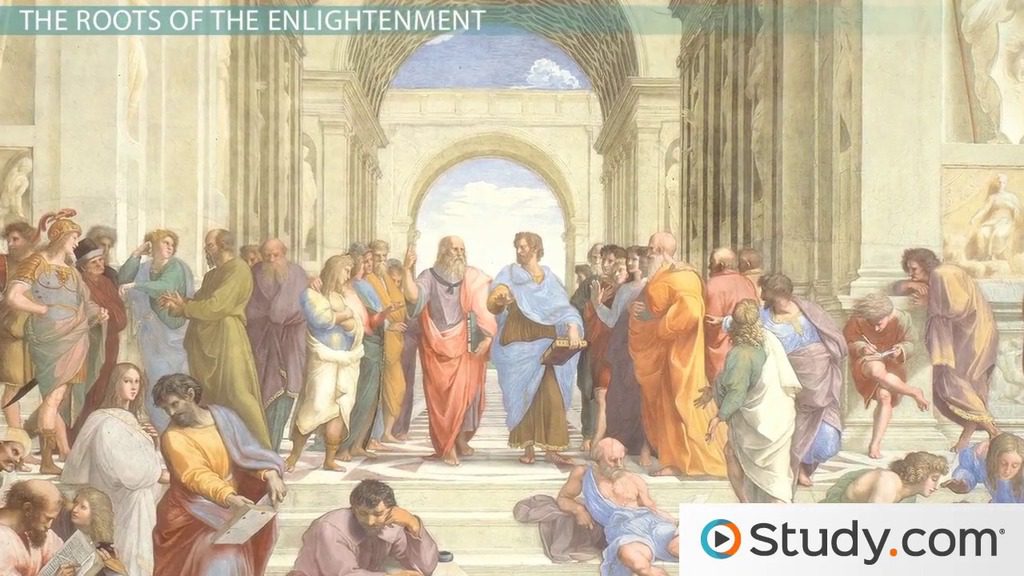The Renaissance and the Enlightenment are two significant periods of European history that led to modern civilization. The Renaissance marked a cultural and intellectual shift from the Middle Ages, emphasizing classical education and humanism. The Enlightenment was characterized by scientific discovery and skepticism of religious beliefs, leading to the rise of deism. Both periods saw significant advancements in science, with the Renaissance paving the way for the scientific revolution of the 17th and 18th centuries. The art of the Renaissance emphasized realism and human form, while the Enlightenment focused on more naturalistic styles and critiquing society and politics. The Renaissance saw the rise of powerful monarchs and republicanism, while the Enlightenment promoted natural rights and democracy. Both periods were essential in shaping the modern world.
The Renaissance vs. The Enlightenment
Introduction
The Renaissance and the Enlightenment are two pivotal periods of European history that paved the way for modern civilization. The Renaissance, which began in Italy during the 14th century, marked a significant cultural and intellectual shift from the Middle Ages. The Enlightenment, which emerged in the 17th and 18th centuries, was a period of intellectual and scientific discovery that challenged traditional beliefs and values. While both periods were marked by revolutionary changes, they differed in their approach to religion, science, art, and politics.
Religion
During the Renaissance, religion played a significant role in shaping cultural and artistic expression. The period was marked by a revival of classical education and humanism, which emphasized the individual’s ability to reason and think for oneself. However, religion still played a central role in the lives of people, and many of the most significant works of art and literature were commissioned by the Catholic Church.
In contrast, the Enlightenment marked a time of skepticism and intellectual questioning of religious beliefs. Enlightenment thinkers rejected religious dogma, and instead, embraced science and reason as a means of understanding the world. This shift led to the rise of deism, which believed in a divine creator but rejected traditional religious concepts such as miracles and revealed truth.
Science
The Renaissance was a time of scientific inquiry, which was fueled by the rediscovery of ancient Greek and Roman philosophy. The period marked significant advancements in areas such as mathematics, astronomy, and anatomy. The scientific discoveries of the Renaissance period paved the way for the scientific revolution of the 17th and 18th centuries.
The Enlightenment was characterized by scientific inquiry and discovery, which challenged traditional beliefs and doctrines. Thinkers such as Isaac Newton, Galileo Galilei, and Francis Bacon helped advance scientific knowledge through their work on physics, astronomy, and empiricism. The Enlightenment also marked the rise of scientific inquiry in areas such as medicine and chemistry, which led to significant technological advancements.
Art
The art of the Renaissance was marked by a renewed interest in classical styles and subjects. The period is famous for its achievements in painting, sculpture, and architecture, with artists such as Leonardo da Vinci, Michelangelo, and Raphael leaving an indelible mark on European art. Renaissance art emphasized realism, balance, and proportion, with a focus on the human form.
The art of the Enlightenment was characterized by a shift towards more realistic and naturalistic styles. The period was marked by a new focus on scientific illustration, with artists such as William Hogarth and Jean-Baptiste-Simeon Chardin depicting everyday life in a realistic and unidealized manner. The Enlightenment also saw the rise of new art forms such as caricature and satire, which were used to critique society and politics.
Politics
The Renaissance saw the rise of city-states and powerful monarchs, such as the Medici family in Florence and Henry VIII in England. The period was marked by a new emphasis on secular power, with rulers seeking to expand their territories and exert greater control over their subjects. The Renaissance also saw the rise of republicanism, with thinkers such as Niccolo Machiavelli promoting the idea of the republic as the ideal form of government.
The Enlightenment marked a significant shift in political philosophy, with thinkers such as John Locke, Jean-Jacques Rousseau, and Thomas Hobbes advocating for the idea of natural rights and social contracts. The Enlightenment promoted the idea that governments should be structured to protect citizens’ rights and promote the general welfare, leading to the rise of democracy and the decline of monarchy.
Conclusion
The Renaissance and the Enlightenment were two pivotal periods of European history that marked significant cultural, intellectual, and scientific transformations. While the two periods shared some similarities in their emphasis on humanism and the individual, they differed in their approach to religion, science, art, and politics. The Renaissance emphasized religious and cultural revival, scientific inquiry, and secular power, while the Enlightenment promoted scientific discovery, intellectual skepticism, and democratic government. Ultimately, both periods were essential in shaping the modern world as we know it today.
